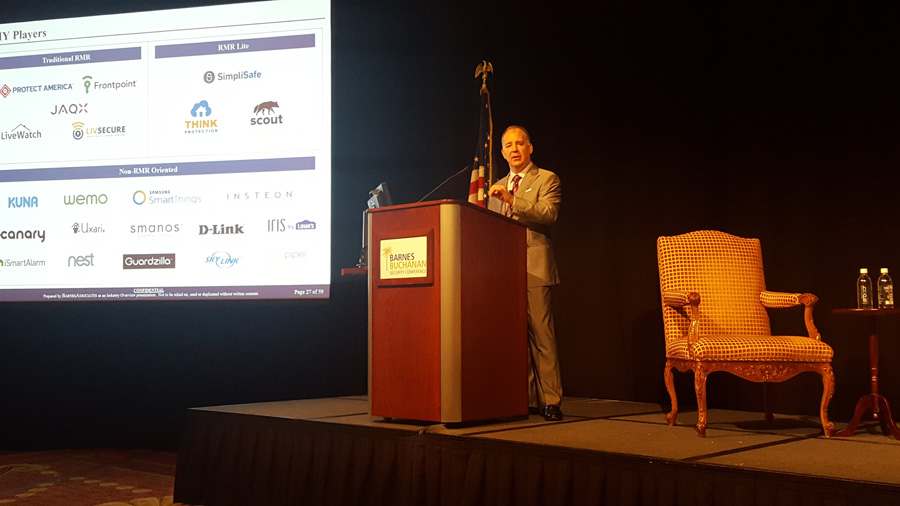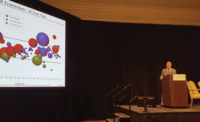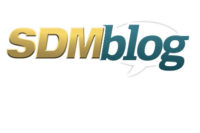There were few surprises, but great detail provided by Michael Barnes in his “Security Alarm Industry Overview” presentation to attendees of the 2017 Barnes Buchanan Security Conference, held February 9-10 at The Breakers in Palm Beach, Fla. Barnes noted, for example, that 20 percent of the market traded in 2016 compared with 5 percent in 2015. However, as he explained, 18 of the 20 percent was the ADT transaction. In total in 2016, $312 million of recurring monthly revenue (RMR) traded at an average multiple of 45-times RMR. In 2015, $77 million of RMR traded at the same average multiple of 45 times.
The security industry’s total revenues reached $55 billion, which is a 6 percent growth rate in 2016, following 5 percent growth in 2015.
Barnes, who is founding partner of St. Louis-based Barnes Associates, focused his annual standing-room-only presentation on four areas: the industry’s growth dynamic; the structure of the industry (the players and how they’re changing); operating metrics of security companies; and market values.
Some of the more thought-provoking parts of the presentation focused on newer business models such as security as a service (SaaS) and do-it-yourself (DIY) security. There was also a solid look at the MSOs, or cable companies, operating in the security space.
Barnes explained that his research shows the industry has moved “very decidedly” over the past 10 years to a SaaS concept, one in which there is a much lower installation fee and the customer pays a higher monthly fee than in a traditional sale. This model has better economics for the skilled player if priced right, stickier relationships with customers, and a competitive advantage, Barnes said. End users like it because they don’t have to tap their capital expenditures budget, they can get easier approval to have security systems installed, and the perception is that they have greater flexibility.
The implications of a SaaS model, however, are more complex. “This type of pricing model is much harder to do. All of a sudden now, you’re a creditor and you have to underwrite the creditworthiness of the customer. You have to know something about what their propensity to stay during the contract period is. You had much lower risk back when you were covering most of your costs up front than when you’re charging no install fee,” Barnes said. “If I’m charging $400 a month now, but seven years from now I have to upgrade that system, then this account is very vulnerable. The other thing is the amount of capital that’s required.”
From the questions and comments posed by the audience, one could see that many people think this model would be too risky to adopt because there is a lot of movement among commercial customers just as there is in the residential space; and because end users generally don’t want to sign the long-term contracts necessary to allow the security companies to recover their investment in the labor and equipment.
In the DIY sector Barnes categorized players into three groups:
- non-RMR oriented, which includes companies such as Canary, D-Link, Samsung SmartThings, Nest, and smanos;
- RMR lite, which provides some level of monitoring such as on-demand, and includes companies such as SimpliSafe, Scout and Think Protection; and
- traditional RMR, which includes companies such as Protect America (ranked No. 14 on the SDM 100), Frontpoint, LiveWatch and several others.
“The DIY space is a much smaller market share [than the MSOs] but it’s getting a lot of interest for good reason: it’s a neat model. I think it certainly has a place in the industry in a big way,” Barnes said. The upside of this model: no service techs, no branches, no trucks rolling. The downside: “If you live online you try to direct traffic to you by buying keywords and that’s gotten a lot more expensive.”
Barnes Associates research showed that the DIY security sector generated nearly $30 million in RMR in 2016, which represents approximately a 2 percent market share. In 2016, DIY security grew approximately 27 percent.
Another keen discussion topic at the Barnes Buchanan Security Conference was the MSOs or multiple-system operators, a group that includes Comcast, Comporium, Time Warner, Cox, AT&T and CenturyLink. Barnes explained that although none of these companies will report their numbers, his consulting and advisory firm was able to triangulate some collective figures for this group.
“We think in 2016, they collectively crossed over the 2 million account threshold. Roughly 2 million customers, about $84 million in RMR, puts them at about 5 percent market share collectively — some pretty significant success,” he said.
He said the MSOs are possibly adding about 65,000 accounts each month. Their growth rate of 21 percent (compared with 41 percent in 2015) may be reflective of the fact that their first group of contracts is coming up for renewal.
“The MSOs are interesting to watch. The next couple of years are going to be pivotal. My prediction is we’ll see at least another one, maybe two of them potentially go out of the industry — but if they don’t then I think they’re probably a permanent fixture,” Barnes declared.
He underscored their big-scale marketing and advertising and their ability to raise awareness about security among consumers. “If anything, I think it’s good that they’re out there creating all this awareness. What the smaller players need to do is walk in and say, ‘Hey, Comcast or AT&T or whoever, is right: that TV commercial that you saw — you need alarm protection. But guess what? You don’t want it from them; you want it from me.’
“So it’s good for the industry to raise that awareness and increase the penetration, because when [their customers] roll off the contract and they’re not happy with the service, the rest of the industry has a chance to pick them up.”
Editor’s Note: Watch for more reporting from the Barnes Buchanan Security Conference here and in SDM’s print editions.




